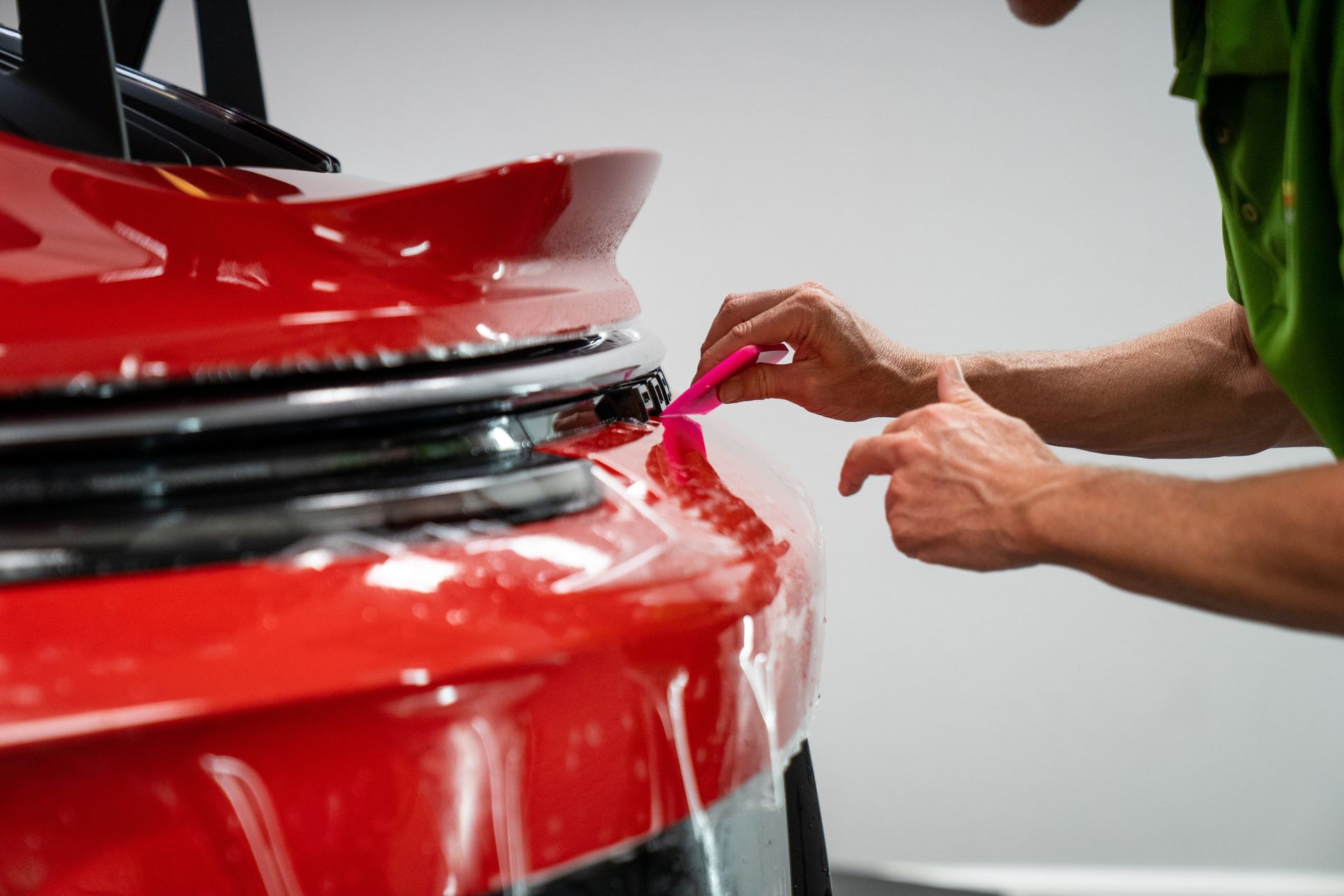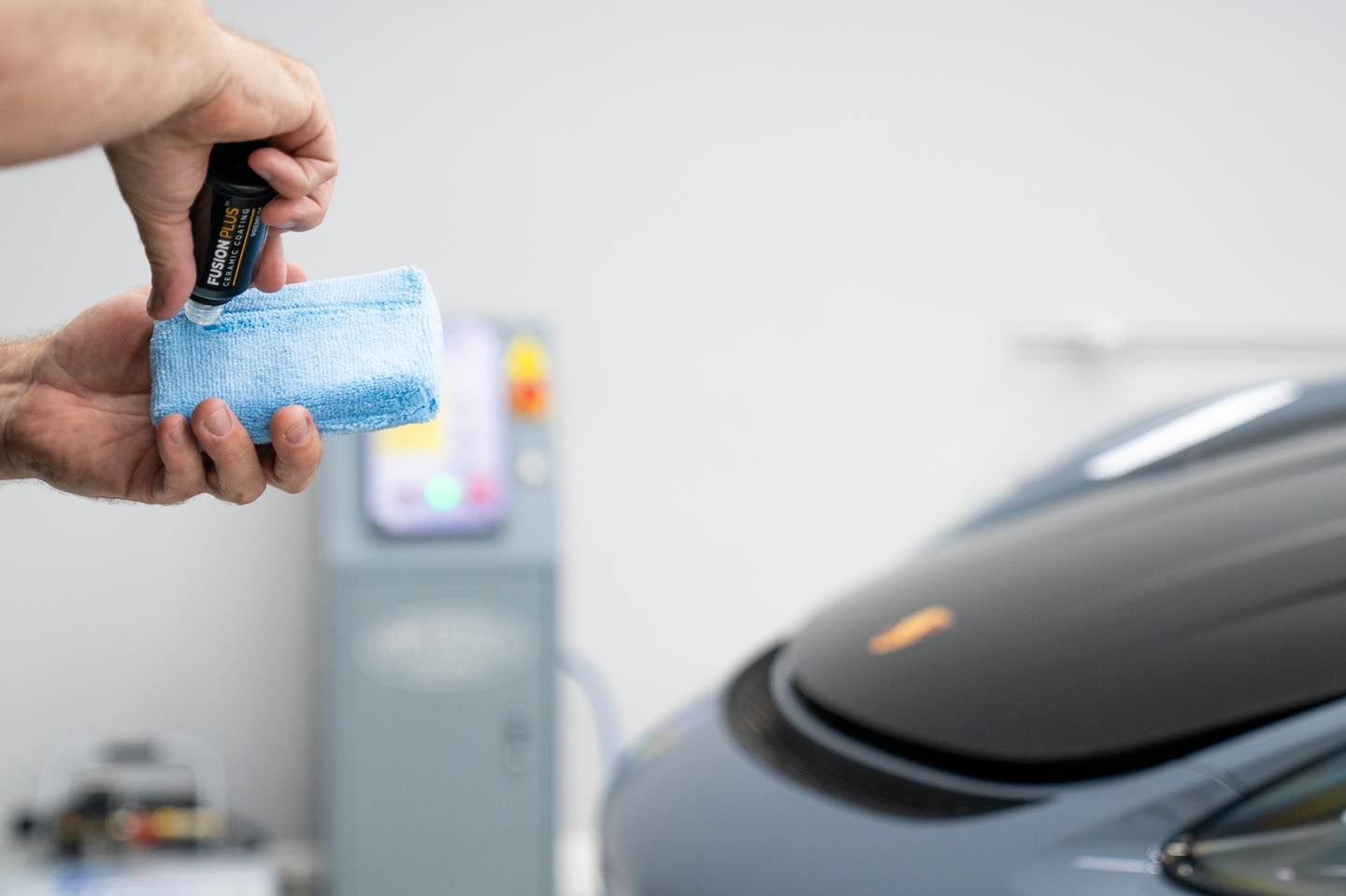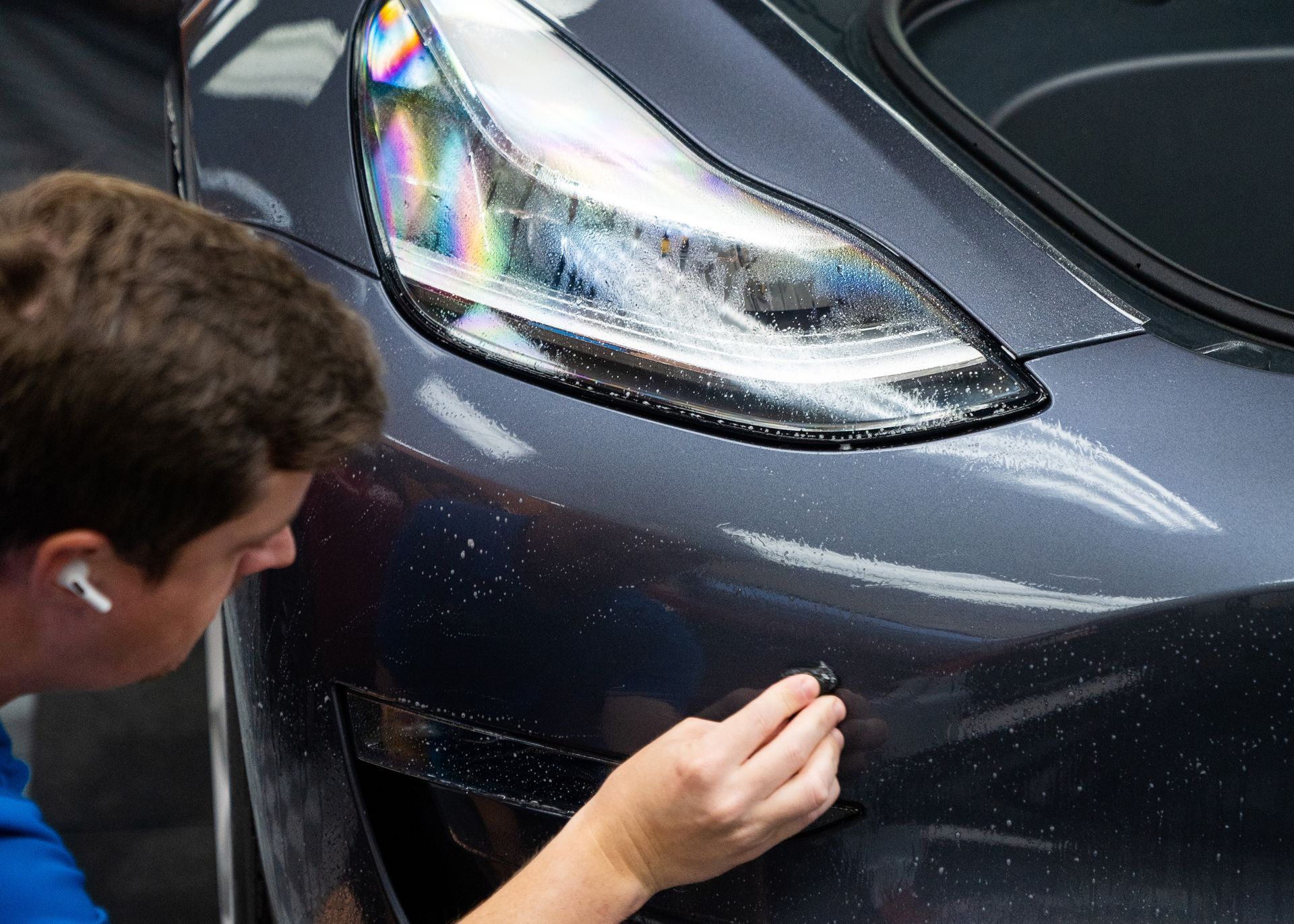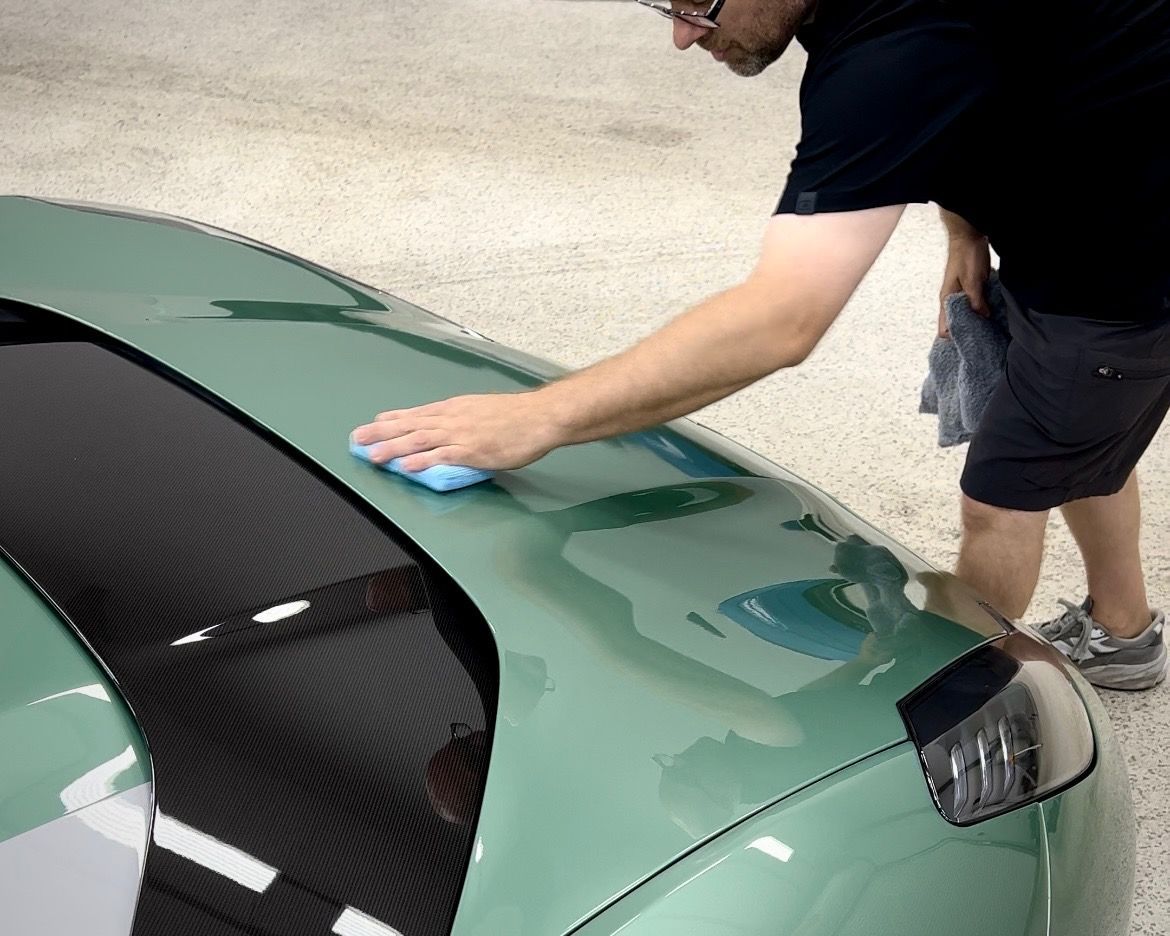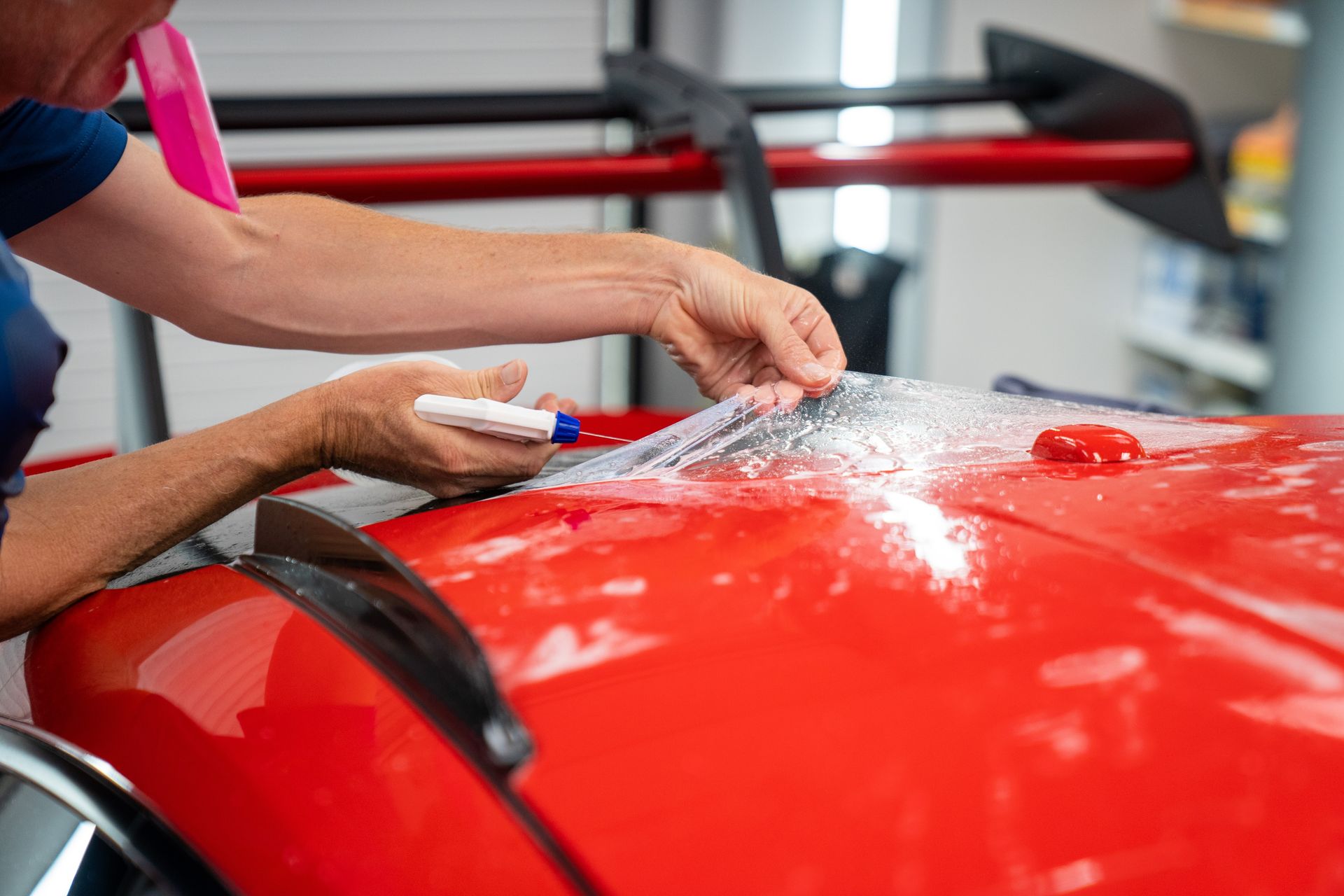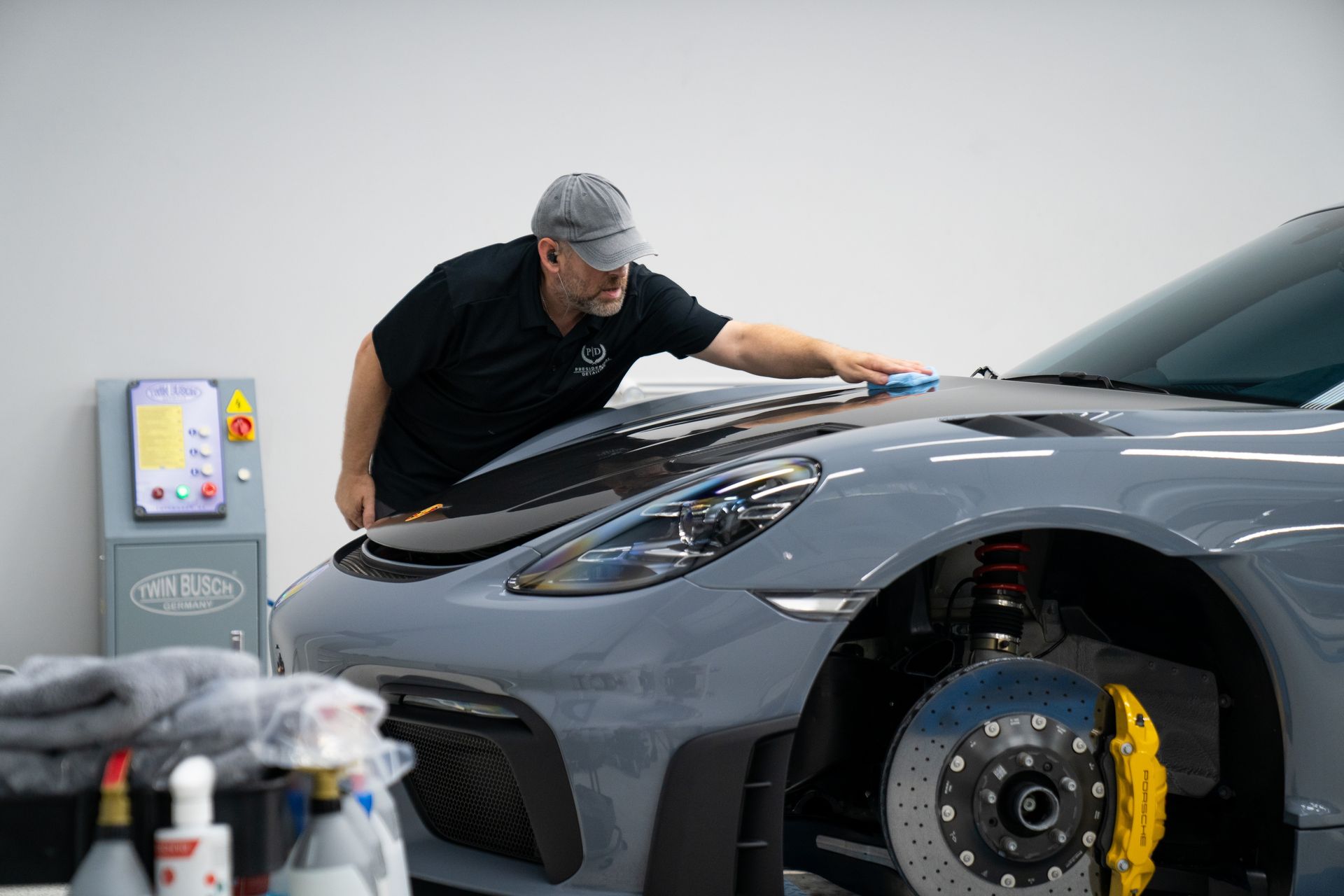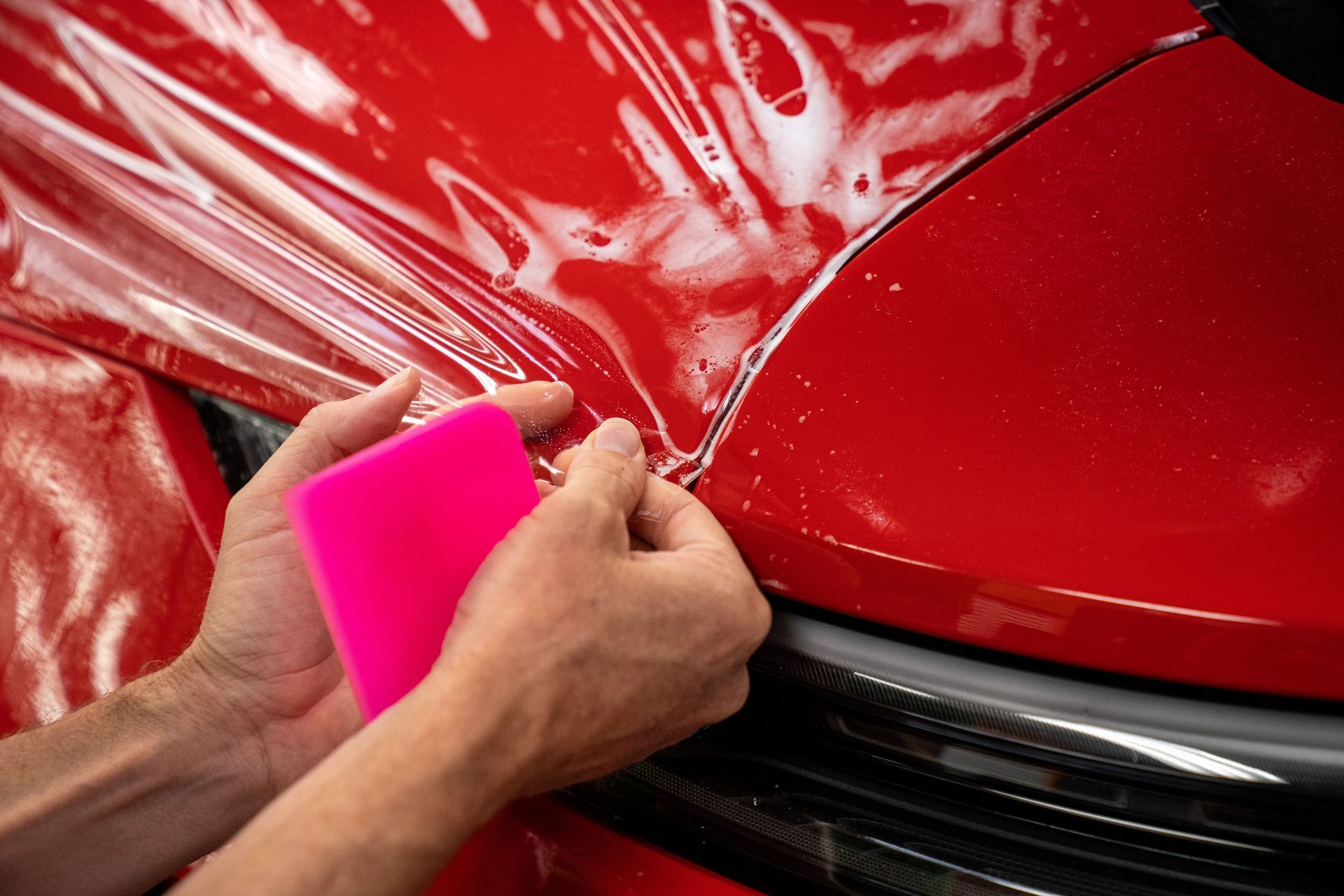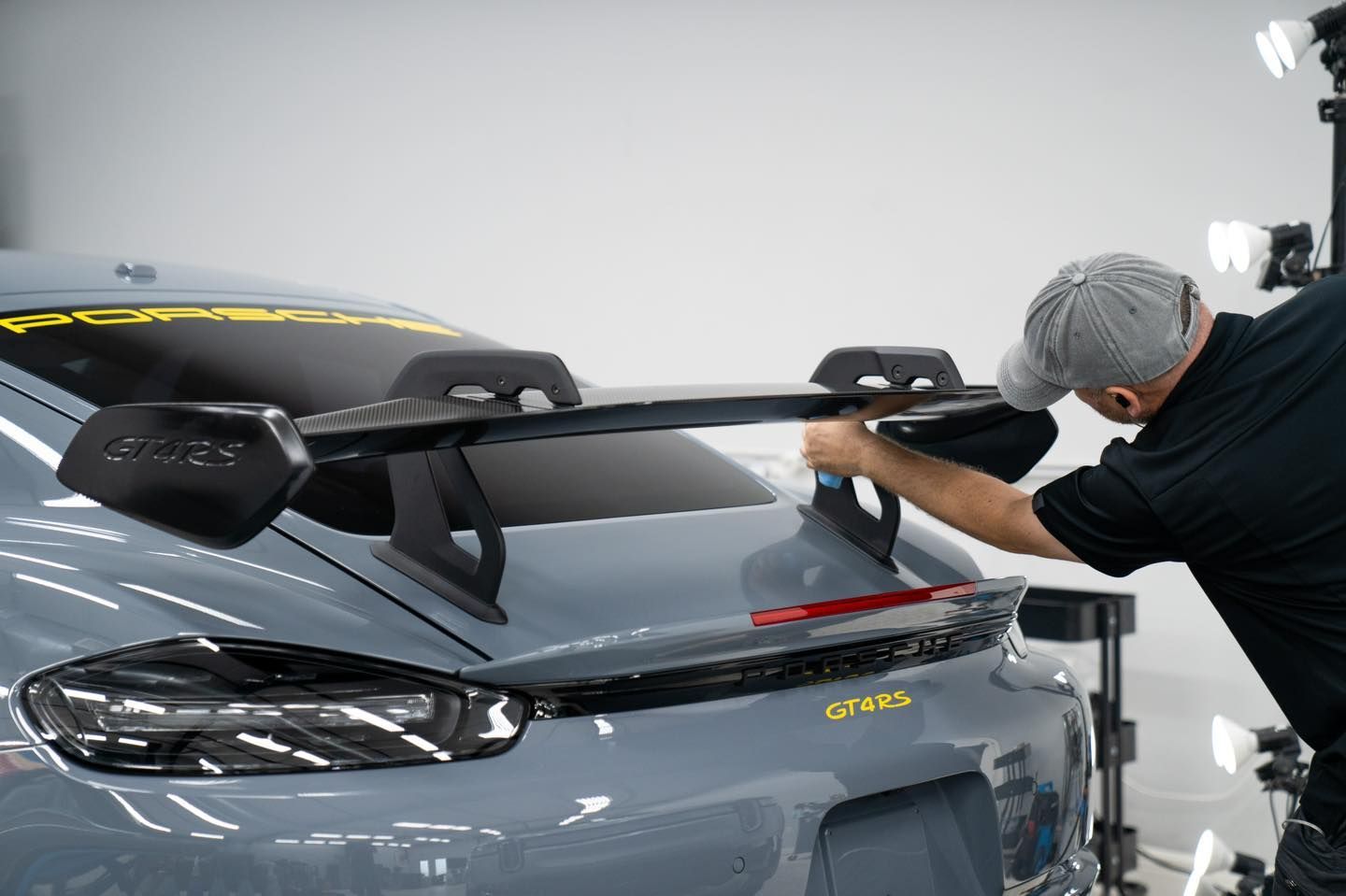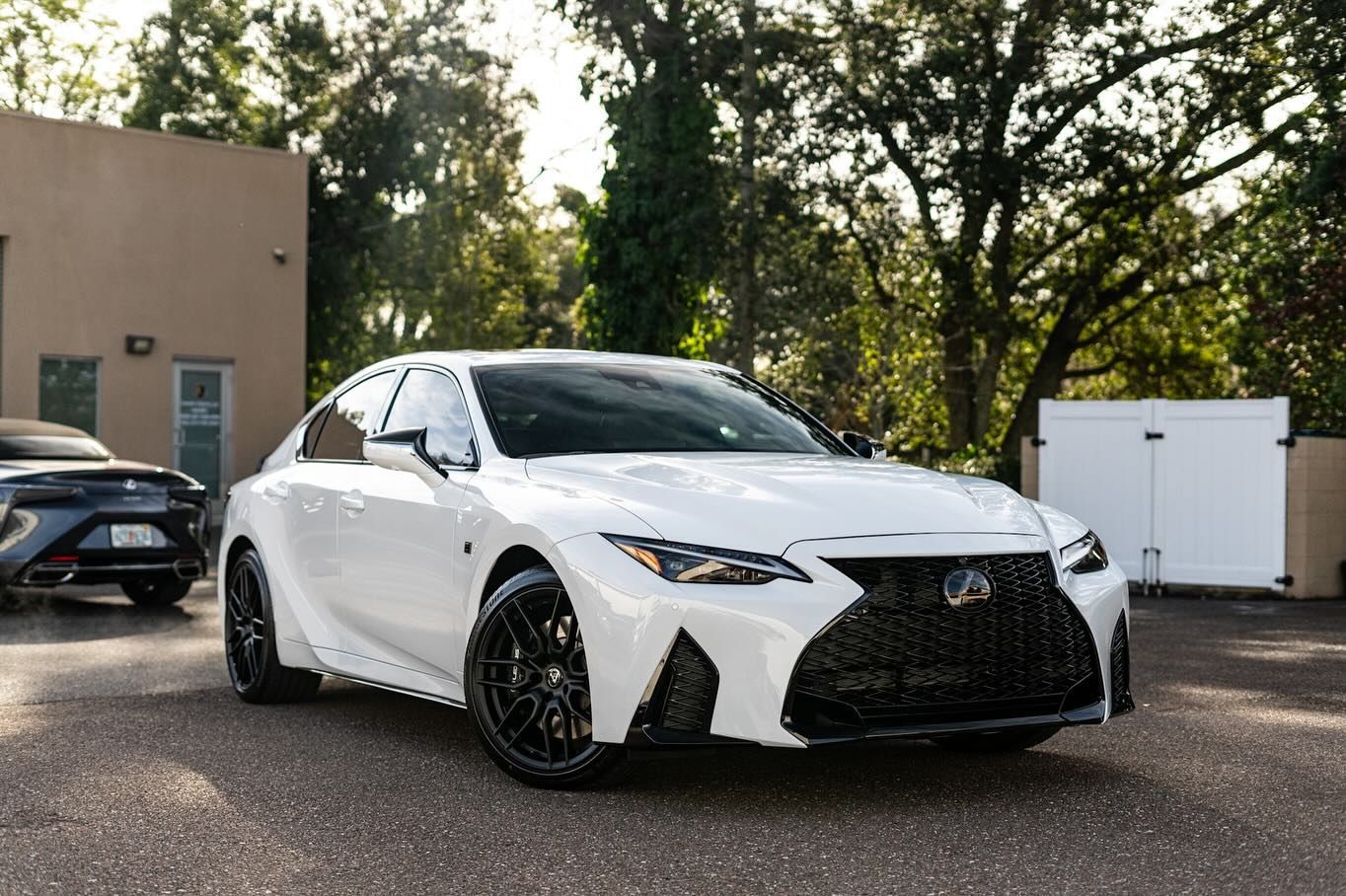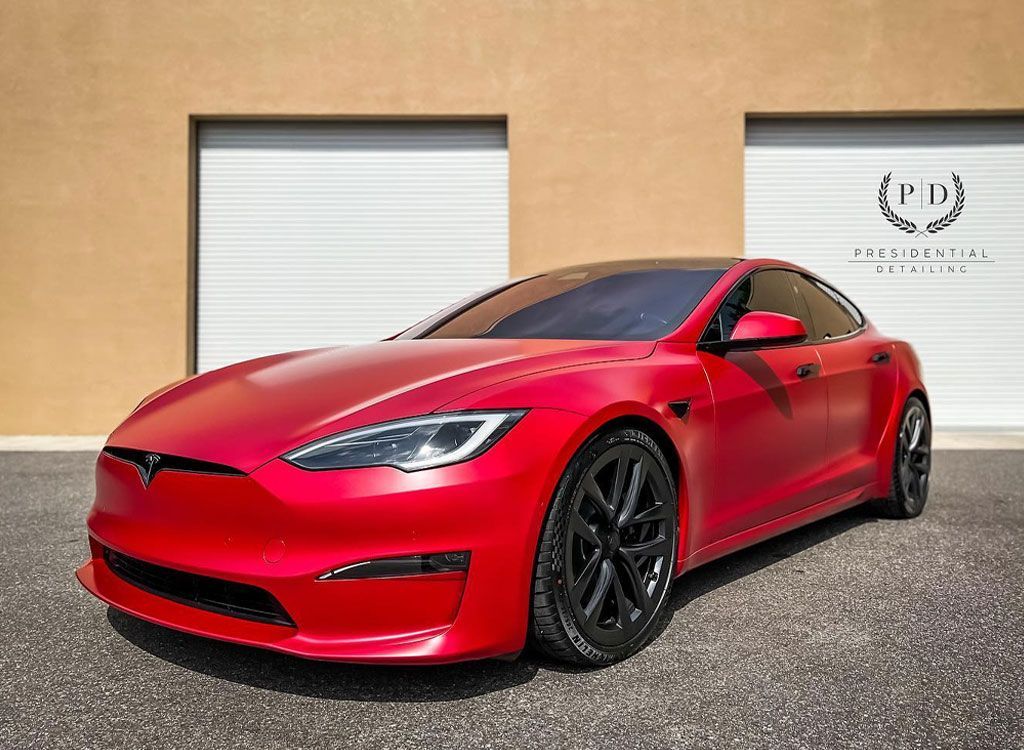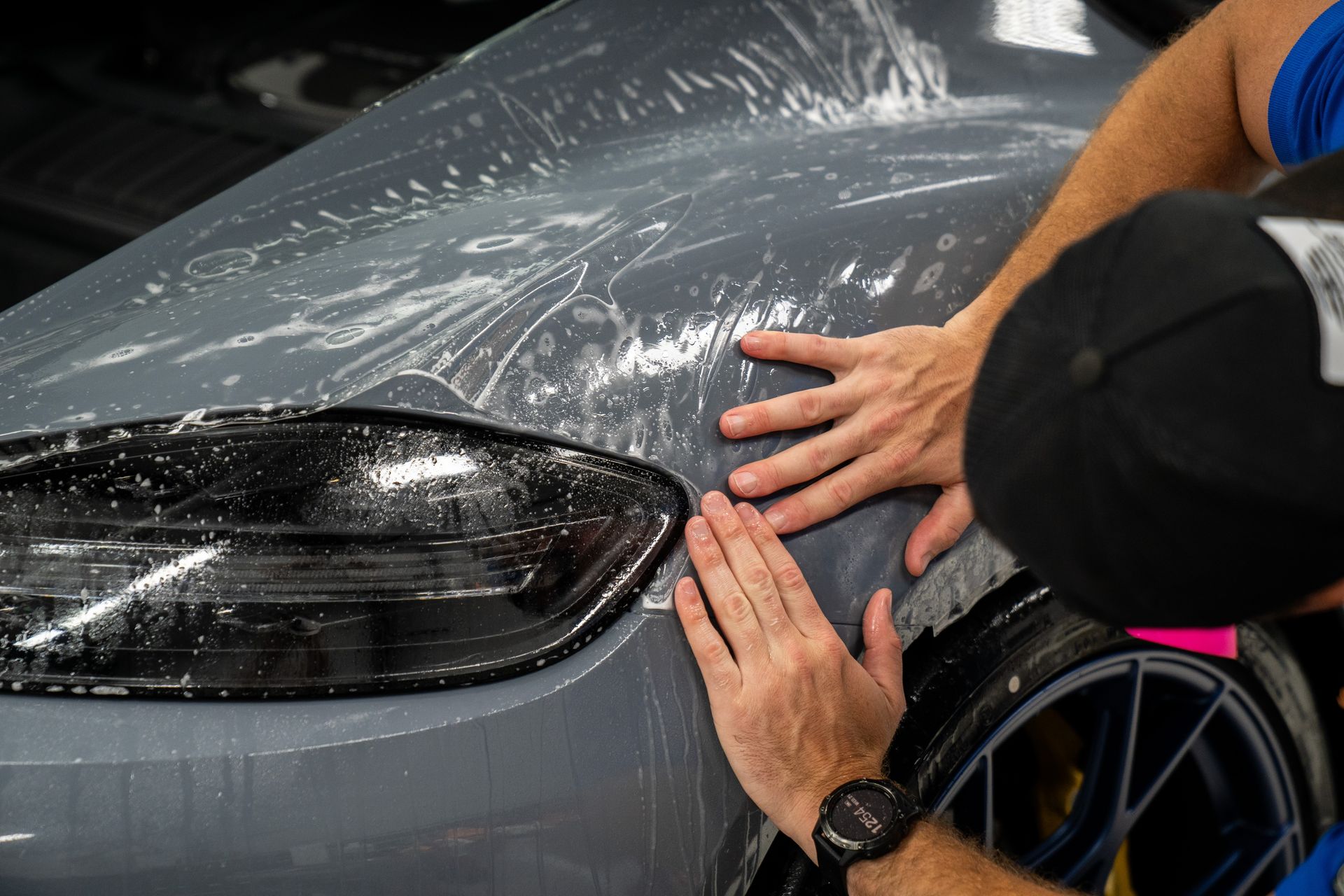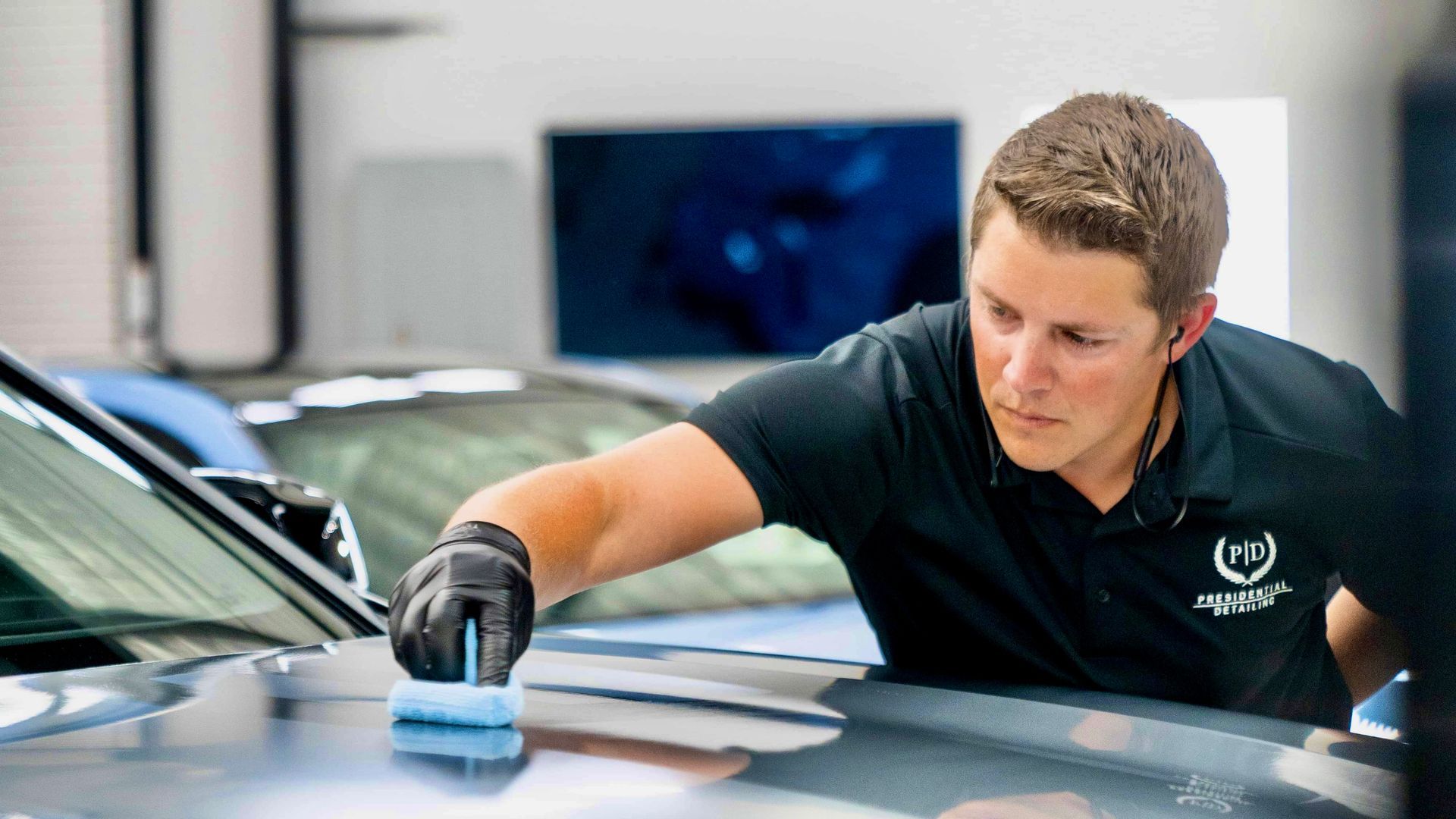Choosing the Best Ceramic Coating Installer in Tampa, FL
CALL (813) 723-9679
GET A FREE ESTIMATEQuality installers usually stand out due to their pronounced online visibility, which features certification details from established organizations like the International Detailing Association (IDA). These certifications are not only impressive badges but also markers of an ongoing commitment to industry standards and education. Keep in mind that quality is also echoed in the little details, like how well they present their previous works.
When choosing a ceramic coating installer in Tampa, FL, it's important to consider factors such as their experience with ceramic coatings, customer reviews and testimonials, the quality of the products they use, and whether they offer warranties on their work. Additionally, inquire about their certification and training from reputable organizations in the industry.
Reviewing Ceramic Coating Installers in Tampa
So, you're eager to give your car the ultimate protection with a ceramic coating, and now comes the crucial task of finding the right installer. A little research goes a long way. Start by delving into online directories, review sites, and local recommendations from fellow car enthusiasts. The objective is to find installers with a robust online presence, professional websites, and a detailed portfolio showcasing their previous work. An installer with a strong online presence and dedicated clients is likely to offer top-notch service.
As you peruse the various installers’ web pages and portfolios, there are key things to keep an eye out for. Look for clear, high-quality images showcasing their work. Any reputable installer should proudly display their craftsmanship. Detailed explanations about their process and products used can also provide insight into their professionalism and knowledge. For instance, if you find an installer who goes into depth about the type of ceramic coatings they use and the benefits they offer, it demonstrates a level of expertise.
Take some time to read through customer reviews and testimonials. Previous clients' experiences can serve as a valuable guide to gauge an installer's reliability, attention to detail, and customer satisfaction. If you stumble upon consistent positive feedback highlighting the quality of work and customer service, consider it a significant green flag. After combing through websites and reviews, it’s time to narrow down your list to a handful of potential installers for further evaluation based on their online presence, portfolio quality, and client feedback.
Professional Qualifications of Ceramic Coating Installers
When selecting a ceramic coating installer, their professional qualifications are paramount. It's essential to verify their training and certifications, ensuring they have the expertise to handle this specialized job. Keep an eye out for evidence of ongoing education and a commitment to industry standards. The International Detailing Association (IDA) certification or membership is a significant stamp of approval. It signifies a dedication to upholding industry best practices. Moreover, installation establishments with certification from specialized ceramic coating manufacturers are generally reliable. These manufacturers often provide specific training programs for installers, ensuring they are well-versed in the nuances of the products they use.
Additionally, take into account the experience and track record of the installers. A long-standing presence in the industry usually indicates a commitment to quality work and customer satisfaction. Some installers may also have recognition from industry associations or awards that highlight their expertise and proficiency. While some argue that practical experience outweighs formal qualifications, it's evident that a blend of professional training and practical experience often yields the best results. It's not merely about having accreditations; it's about what those accreditations represent—a commitment to best practices, safety standards, and ongoing learning within the industry.
Understanding the professional qualifications of ceramic coating installers enables you to make an informed decision about who to trust with your car's ceramic coating installation needs.
Assessing Customer Reviews and Feedback
Once you've identified a few ceramic coating installers with solid qualifications, it's time to delve deeper into what their customers have to say. Customer reviews and feedback can provide valuable insight into the installer's work ethic, service quality, and overall customer satisfaction. Previous clients' experiences can help you understand what to expect, assisting you in making a well-informed decision.
Keep in mind that it's important to review feedback on multiple platforms, as this can give you a more comprehensive view of the installer's reputation. Platforms like Google Reviews, Yelp, and automotive forums offer diverse perspectives and experiences, allowing you to gauge the general consensus regarding the installer's performance. When analyzing customer reviews, pay close attention to recurring themes. If you notice consistent positive comments about a particular installer's attention to detail or exceptional customer service, it speaks volumes about their commitment to quality. Conversely, recurrent negative feedback about missed deadlines or subpar results should raise red flags and prompt further investigation.
If you come across multiple reviews praising a specific installer for their meticulous application process and long-lasting results, it indicates a high level of expertise and professionalism. Conversely, if several customers express dissatisfaction with the durability of the coating or mention poor communication during the process, these are crucial insights that should influence your decision-making. In addition to individual reviews, look for broader trends and patterns. Consistently positive comments related to prompt responses and clear communication demonstrate an installer’s dedication to client satisfaction, while recurring complaints about inconsistent results or difficulty in addressing post-installation issues should not be taken lightly.
Budget Considerations for Ceramic Coating
When investing in ceramic coating for your car, it's crucial to consider your budget. Quality work generally comes with a higher price, which is understandable. However, finding the right balance between cost and value is key. Let's explore how to navigate this aspect of the ceramic coating process.
Transparency in pricing is a crucial aspect of budget considerations for ceramic coating. Seek installers who provide clear and detailed pricing structures. This transparency demonstrates the installer's confidence in their services and conveys a sense of trustworthiness. Always inquire about any additional costs that might arise, especially for specialized coatings or extra services. Understanding what you're paying for and ensuring there are no hidden costs that may surprise you later on is essential. A reputable installer should be upfront about all potential charges, guiding you through the pricing structures without ambiguity.
Some installers may offer different levels of ceramic coatings at various price points. They might have a standard package and then offer premium packages with extra benefits such as extended warranties, enhanced durability, or added services like paint correction or interior detailing. Understanding these options helps you make an informed decision based on your budget and specific needs. Many professional ceramic coating installers provide consultation sessions where they can explain the different packages available and help you choose the one that best suits your requirements.
During a consultation, the installer might discuss the differences in pricing while elaborating on the value each package offers. They could use real-life examples or customer testimonials to showcase the benefits of higher-tier packages, helping you gauge whether the additional features are worth the investment. Openly discussing pricing structures and exploring options together ensures that both you and the installer make well-informed decisions that align with your budget expectations and desired outcome for your car's ceramic coating.
Understanding these critical factors when it comes to budget considerations empowers you as a consumer and ensures that you make a well-informed choice when selecting a ceramic coating installer for your car.
Getting the Most from Your Ceramic Coating
So, you've treated your car to a fresh coat of ceramic protection. It's like giving your vehicle a warm hug to shield it from the elements. But to make this embrace last, you've got some responsibilities too. Now that you've committed to the ceramic coating, following the maintenance guidelines provided by the installer is crucial. These guidelines are designed to preserve the longevity and effectiveness of the ceramic coating, and may include recommendations on how often you should wash your car and which types of products are safe to use.
Regular care is essential to maintaining the coating's integrity by preventing contaminants from adhering to the surface and degrading the coating. Washing your car according to the installer's instructions ensures that dirt, grime, and other pollutants don't diminish the protective properties of the ceramic coating. Always use the products recommended by the installer to avoid damaging the coating. For instance, Tampa's humid climate poses unique challenges for vehicle maintenance. The intense sun and frequent rain can contribute to water spots, oxidation, and UV damage. Communicating with your installer about Tampa's specific climate and driving conditions can help tailor care instructions for maximum protection against these environmental factors.
Moreover, if you plan to take your car off-road or on frequent long-distance trips, discussing your driving habits with the installer can lead to customized care instructions that align with these activities. By carefully adhering to the maintenance guidelines provided and openly communicating with your installer about potential environmental stressors in Tampa, you can effectively make the most out of your ceramic coating investment.
Aftercare Support: A Key Determinant
It's crucial to take into account the installer's level of aftercare support after making an investment in a ceramic coating for your car. This is not just about resolving any potential issues with the coating but also ensuring its long-term performance and your overall satisfaction with the service.
- Inquire About Post-Installation Support: It's crucial to ask the installer about the post-installation support they provide. This includes understanding their approach to addressing any concerns or questions you may have after the ceramic coating is applied. A reliable installer should be responsive and willing to provide guidance and advice as needed, ensuring that you feel supported throughout the entire process.
- Understanding Warranty Coverage: Another key aspect of aftercare support is warranty coverage. When evaluating installers, be sure to clarify the details of their warranty program for the ceramic coating. A comprehensive warranty can offer you peace of mind, knowing that any potential issues with the coating will be addressed within the specified terms. A commitment to standing behind their work through a solid warranty demonstrates the installer's confidence in the quality of their service.
- Installer Responsiveness: The responsiveness and transparency of the installer in addressing any issues or inquiries are paramount. When considering different installers, pay attention to their track record in handling aftercare-related matters. An installer who is proactive and readily available to address concerns after the coating has been applied reflects dedication to customer satisfaction and long-term coating performance.
Your level of comfort and long-term satisfaction with your ceramic coating investment will depend significantly on the after-care support the installer offers. By prioritizing this aspect in your selection process, you set yourself up for a smooth and well-supported experience as a valued customer. Finding a top-rated professional for your car's ceramic coating doesn't just end with the application; it extends to the level of aftercare support they offer. Your investment deserves ongoing attention and assurance, ensuring that you continue to relish a sleek and protected vehicle finish long after its installation.
Best Ceramic Coating Installers in Tampa, FL
Ensure your vehicle shines with unmatched brilliance by choosing Presidential Automotive Detailing, the
premier ceramic coating service installer in Tampa, FL. Our expert technicians use state-of-the-art techniques to apply high-quality ceramic coatings, providing your car with exceptional protection against UV rays and other environmental damage. Preserve your car's flawless finish and enhance its durability with our top-notch services. Trust Presidential Automotive Detailing for superior results and long-lasting beauty. Schedule your appointment today and give your vehicle the ultimate care it deserves. Call us at
(813) 723-9679 to get started!
